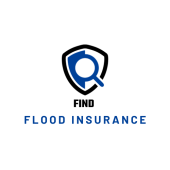In recent years, the frequency and severity of floods have increased, making it crucial for homeowners to prioritize flood insurance. Whether you live in a high-risk flood zone or not, the possibility of flooding should never be overlooked. It is crucial to find flood insurance tailored to your needs can provide invaluable protection for your home and peace of mind for your family. In this guide, we’ll explore the importance of flood insurance and provide actionable steps to help you find the right policy.
 Understanding the Importance of Flood Insurance
Understanding the Importance of Flood Insurance
Flood damage is among the most common and costly natural disasters in the United States. Unfortunately, many homeowners mistakenly believe that their standard homeowners’ insurance policy covers flood damage, only to discover otherwise when it’s too late. Unlike homeowners’ insurance, flood insurance specifically covers damages caused by flooding, including structural damage, destruction of personal belongings, and the cost of temporary living arrangements if your home becomes uninhabitable.
Taking the time to find flood insurance is especially important for homeowners living in designated flood hazard areas. However, floods can occur anywhere, regardless of proximity to bodies of water or historical flood patterns. Climate change, urban development, and aging infrastructure all contribute to the increasing risk of flooding in various regions. Therefore, obtaining flood insurance is a prudent decision for all homeowners, regardless of their perceived risk level.
Key Factors to Consider on Your Search to Find Flood Insurance
When conducting your search to find flood insurance, several key factors should be taken into account to ensure you find the most suitable policy for your needs:
- Coverage Options: Flood insurance typically covers two main components—building coverage and contents coverage. Building coverage protects the structure of your home, including its foundation, walls, and electrical systems, while contents coverage reimburses you for damaged or destroyed personal belongings. Evaluate your coverage needs based on the value of your property and possessions.
- Flood Risk Assessment: Assess your property’s flood risk to determine the level of coverage required. FEMA provides flood maps and online tools to help homeowners identify flood hazard areas and assess their risk level. Understanding your risk profile will guide you in selecting an appropriate level of coverage.
- Policy Exclusions and Limitations: Familiarize yourself with any exclusions and limitations outlined in the flood insurance policy. Certain items or types of damage may not be covered, or coverage may be subject to specific conditions or deductibles. Clarify any uncertainties with your insurance provider to avoid surprises in the event of a flood.
- Premium Costs: Consider the cost of premiums when comparing flood insurance policies. Premiums vary depending on factors such as the property’s location, flood risk, coverage amount, and deductible. While cost is an important consideration, prioritize obtaining adequate coverage to protect your investment and assets.
- Insurance Provider Reputation: Choose a reputable insurance provider with experience in offering flood insurance policies. Research customer reviews, ratings, and testimonials to gauge the reliability and customer service quality of potential insurance companies. A reliable provider will guide you through the process, assist you in filing claims, and provide support in the event of a flood.
Steps to Find Flood Insurance
Now that you understand the importance of flood insurance and the key factors to consider, follow these steps to find the right policy:
- Assess Your Flood Risk: Use FEMA’s Flood Map Service Center or consult with local authorities to assess your property’s flood risk and determine your insurance needs.
- Research Insurance Providers: Research insurance companies authorized to offer flood insurance policies through the National Flood Insurance Program (NFIP) or private insurers offering flood coverage.
- Request Quotes: Contact multiple insurance providers to request quotes based on your coverage requirements and property details. Compare quotes to evaluate coverage options and premium costs.
- Review Policy Terms: Carefully review the terms and conditions of each policy, including coverage limits, exclusions, deductibles, and premium payment options.
- Select the Right Policy: Choose the flood insurance policy that best meets your needs and budget. Work with your chosen insurance provider to finalize the policy and complete the necessary paperwork.
Conclusion
The search to find flood insurance is a proactive step towards protecting your home and assets from the devastating effects of flooding. By understanding the importance of flood insurance, assessing your risk level, and carefully evaluating coverage options, you can find a policy that offers comprehensive protection and peace of mind. Don’t wait until it’s too late—start your search to find flood insurance today and safeguard your home against the unexpected.



